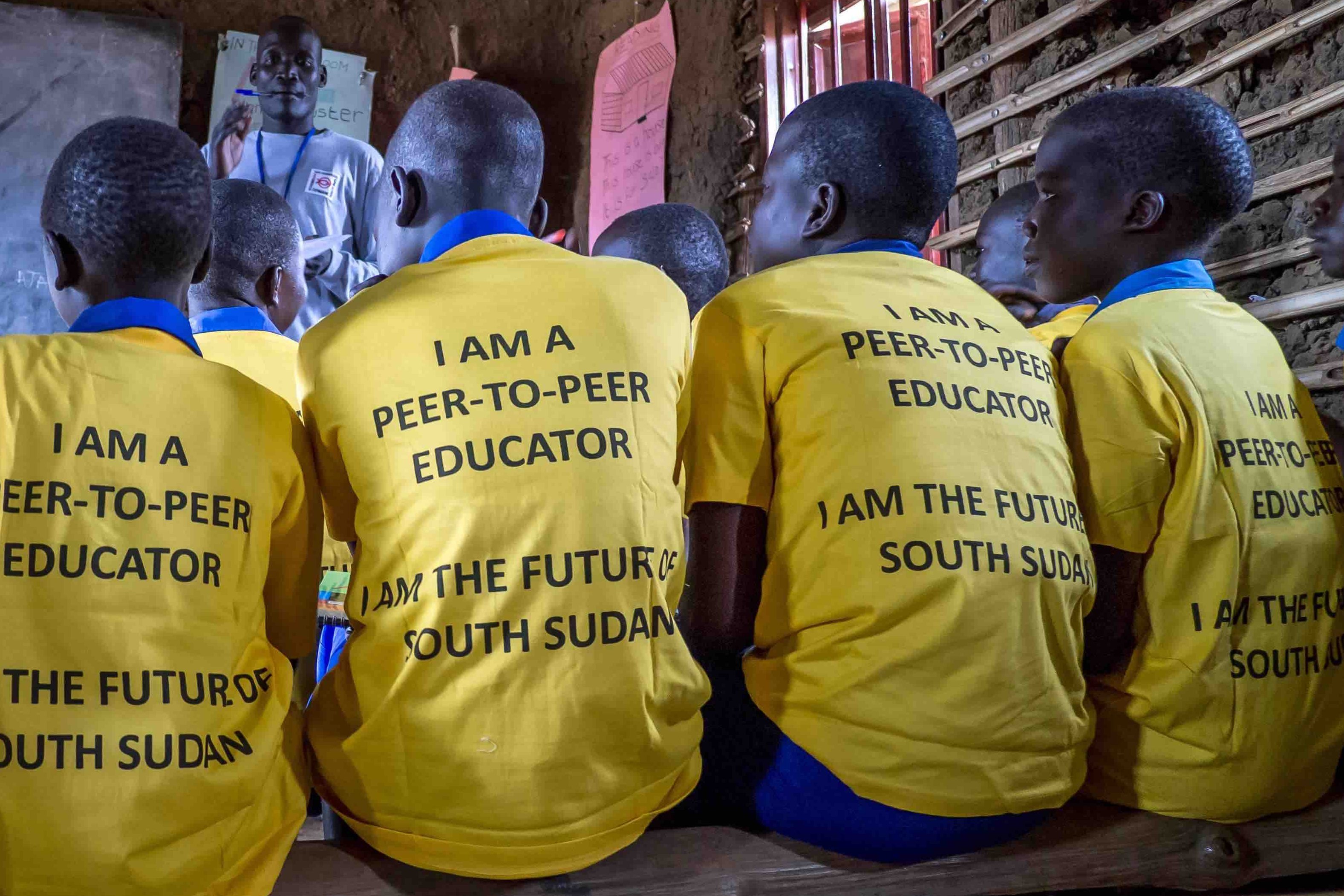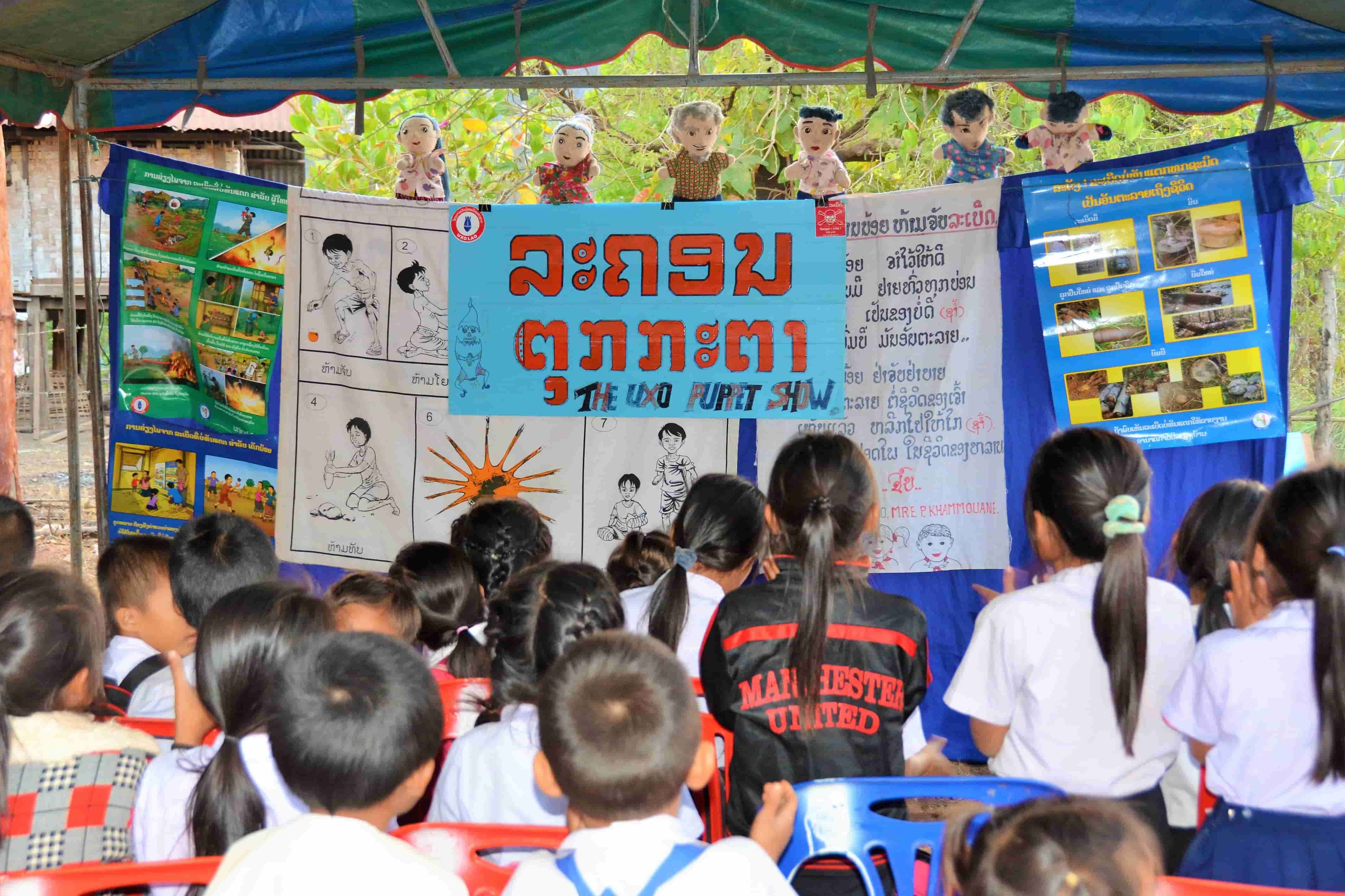MINE RISK EDUCATION
A population educated about the risks of mines can introduce measures in affected areas to prevent more people falling victim to mines.
Mines are quickly laid. Clearing and disarming them is difficult and expensive in comparison. Accidents can occur on a daily basis until a minefield is cleared. Be it because an animal or human steps on a mine. Or because children think colourful cluster munition is something to play with. Adults in many regions collect explosive remnants of war to sell the metal they contain – unaware of the fact that they can explode at any time.
We show people living in affected areas how dangerous landmines and remnants of war really are. We also practise behaviour patterns with them that enable them to avoid accidents. This gives them a certain amount of safety in spite of the threat.
Our work differs according to country and situation:
- Our teams in the DR Congo use drawings and mock-ups to teach children how to recognise dangerous objects and who they should report them to if they find one.
- Village communities in Laos are educated about the risk of dangerous cluster bombs from the Vietnam war with the aid of songs and puppet theatre.
- In South Sudan, we train youths and young adults who then go on to teach people of their age group and in their environment how to behave safely.


Digital Risk Education
Since the start of the Covid pandemic, classic, direct risk education has become severely restricted or even impossible in many countries. Therefore, World Without Mines enables an innovative approach of digital risk education by means of shadow puppet theater.
More information can be found on our digital risk education project page.
